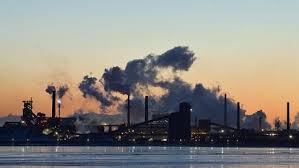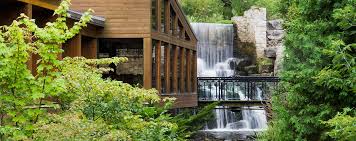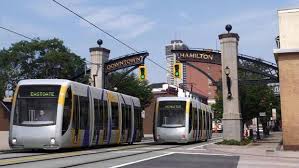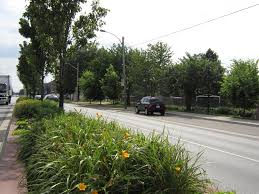 By Ray Rivers
By Ray Rivers
October 23, 2014
BURLINGTON, ON.
Hamilton used to be the second largest city in Ontario, with a powerful football team showcasing its importance, and vying with Toronto for status. But growth, driven by the steel industry, started to dry up in the late 60’s as Ontario’s economy became more complex and service-oriented, and overseas markets started to replace our home-grown metal products.
Today ‘Steel Town’ is only the fifth most populous city in the province and with a slagging growth rate, compared to, say, Milton. Oh, and the Tiger Cats lost the Grey Cup to the Rough Riders last year.
 Like other rust-belt cities around the Great Lakes, Hamilton has seen its core decline and the surrounding suburbs mushroom over the decades since WWII. And it would be unfair to blame the city’s decay solely on the changing economy. Decisions by small-minded councils over the years have inadvertently helped bury potential recovery by favouring urban sprawl and the automobile over downtown development. For example, despite a proud history of public service rivalling that of Toronto’s transit system, the Hamilton Street Railway is, today, a railway in name only.
Like other rust-belt cities around the Great Lakes, Hamilton has seen its core decline and the surrounding suburbs mushroom over the decades since WWII. And it would be unfair to blame the city’s decay solely on the changing economy. Decisions by small-minded councils over the years have inadvertently helped bury potential recovery by favouring urban sprawl and the automobile over downtown development. For example, despite a proud history of public service rivalling that of Toronto’s transit system, the Hamilton Street Railway is, today, a railway in name only.
Barton Street and the rest of the older area of Hamilton could easily be mistaken for somewhere in Cleveland, Buffalo, or maybe even Detroit – the other once great cities bordering the Great Lakes. And as further consequence, most of Hamilton’s tax base is residential today, whereas it once included a more diversified mix including more industrial and commercial. As a result residential property taxes are among the highest in the province.
 Other economic health indicators such as unemployment, welfare levels and average incomes are also less than favourable. So, it is no wonder that Hamilton has some of the most competitively priced housing in the so-called Golden Horseshoe. Old Ancaster, Dundas and Westdale communities, which are exceptional places to live, can be contrasted with the dilapidated city core and all of that mindless urban sprawl in farm country.
Other economic health indicators such as unemployment, welfare levels and average incomes are also less than favourable. So, it is no wonder that Hamilton has some of the most competitively priced housing in the so-called Golden Horseshoe. Old Ancaster, Dundas and Westdale communities, which are exceptional places to live, can be contrasted with the dilapidated city core and all of that mindless urban sprawl in farm country.
This Monday, voters in the City will elect a new council and mayor. Of the twelve candidates running for mayor, only three are really in contention. I met with leading candidate, and a former mayor (2006-2010), Fred Eisenberger and also with councillor Brian McHattie.
Both of these candidates have extensive experience in city politics and are aware of the challenges ahead for Hamilton and themselves should they be elected. I sensed that both mostly shared a common vision of what is required for the city to break from the past and move towards a brighter future.
 For example, they agree on the need to re-develop the downtown. That means support for what they hope will be a provincially funded light rail transit system (LRT), to do for King Street what the subway did for Yonge Street in Toronto. Redevelopment of the the downtown and waterfront are key to bringing people back into the city core, but transit is essential to avoid the kind of gridlock issues currently facing Toronto.
For example, they agree on the need to re-develop the downtown. That means support for what they hope will be a provincially funded light rail transit system (LRT), to do for King Street what the subway did for Yonge Street in Toronto. Redevelopment of the the downtown and waterfront are key to bringing people back into the city core, but transit is essential to avoid the kind of gridlock issues currently facing Toronto.
McHattie highlighted the need for political leadership – a council speaking with one voice, particularly essential when dealing with the Province and the development industry. And McHattie is also the real ‘green’ candidate, opposing urban sprawl, pushing additional bikeways and even greater availability of transit to replace the pedestrian unfriendly automobile.
Hamilton is discovering new business opportunity in its emerging arts sector with regular arts and music ‘crawls’ – an attraction to scores of city dwellers who rarely venture out at nighttimes otherwise, compared to those in other cities. Call it cause and effect – more people downtown means more demand for commercial services, and then more services mean more incentive for people to come and live downtown.
Councillor Brad Clark, a former Mike Harris MPP, didn’t respond to my requests for a meeting. Although a one-time supporter of an LRT, he appears to have flipped on this issue and is currently pushing for more roadways, and thus more cars and eventual gridlock. I also had the pleasure of chatting with Brother Reverend Michael Baldaraso of the Church of the Universe, another would-be mayor.
Brother Michael is well known for his promotion of legalized marijuana, which he insists is a sacrament in his one-man ministry. Having run in an endless string of campaigns trying to get elected for something, including leadership of the former federal Progressive Conservatives and Alliance parties, Reverend Badasaro is active and well-liked by his community in the old city core where he lives.
Baldasaro has offered some innovative suggestions into the mayors debate, including an alternate design for the LRT and the creation of an oversight committee of also-ran politicians, to keep the newly elected council’s feet to the fire. Oh and his industrial vision for the city includes the production of that whacky weed, as we’d expect.
 Aldershot, once part of Hamilton (Wentworth County) seceded to join Burlington in the early 1970’s. Then when the Harris government decided to forcibly amalgamate the new city of Hamilton, over a decade ago, many outlying residents would have traded their first-born to also join Burlington. But Harris needed the regional communities’ taxes in order to pay for his downloaded provincial social services in Hamilton.
Aldershot, once part of Hamilton (Wentworth County) seceded to join Burlington in the early 1970’s. Then when the Harris government decided to forcibly amalgamate the new city of Hamilton, over a decade ago, many outlying residents would have traded their first-born to also join Burlington. But Harris needed the regional communities’ taxes in order to pay for his downloaded provincial social services in Hamilton.
Today, nobody believes that the ‘egg’ of amalgamation will be unscrambled, and the city decentralized as it functioned before. But disaffected voters would be a lot happier in this election were someone elected who could lift the city out of its troubled past and towards a brighter and better future. If you can believe the politicians whom I spoke with, that may well be within our grasp.
 Ray Rivers writes weekly on both federal and provincial politics, applying his more than 25 years as a federal bureaucrat to his thinking. Rivers was a candidate for provincial office in Burlington where he ran against Cam Jackson in 1995, the year Mike Harris and the Common Sense Revolution swept the province.
Ray Rivers writes weekly on both federal and provincial politics, applying his more than 25 years as a federal bureaucrat to his thinking. Rivers was a candidate for provincial office in Burlington where he ran against Cam Jackson in 1995, the year Mike Harris and the Common Sense Revolution swept the province.
Background links:
Hamilton History More Hamilton Eisenberger McHattie
Urban Renewal Baldasaro’s LRT Aldershot




















Ray – nicely written article. You seem fed up with amalgamation. You should leave the flamborough area and move to Halton. How about aldershot? Right next door to flamborough, but in Halton! You’d be happier. And – FREE from the grasp of the tax monster hamilton.
Good article. However, Aldershot will never be a part of Hamilton. Officially, it is a part of Burlington, which is officially a part of the GTA, as a whole. The border between the two has to start somewhere. It starts in that area. If anything, Halton one day, could or maybe even will amalgamate into one city. Maybe two. Hamilton is a non-issue here. No one in Aldershot even goes there. It is not even a consideration. Seriously! If anything, Hamilton will get its grimy mitts on the taxpayers of Brantford, Caledonia or Grimsby. If I lived there, I would be truly concerned. Hamilton thinks it is in the Big Boy Club. It isn’t. Everyone knows this, except Hamilton. All Hamilton wants is the property taxes. Eventually, they’ll have to realize that they can’t keep taking over other towns. Heck – one day, Burlington will probably take over Hamilton.
“Brother Michael is well known for his promotion of legalized marijuana, which he insists is a sacrament in his one-man ministry.”
I tried sniffing ‘coke’ once … but the tab on the can got caught up in my right nostril … and I darn near DROWN-DED!
Great coverage Ray … I like Hamilton at least ten times better than TO.